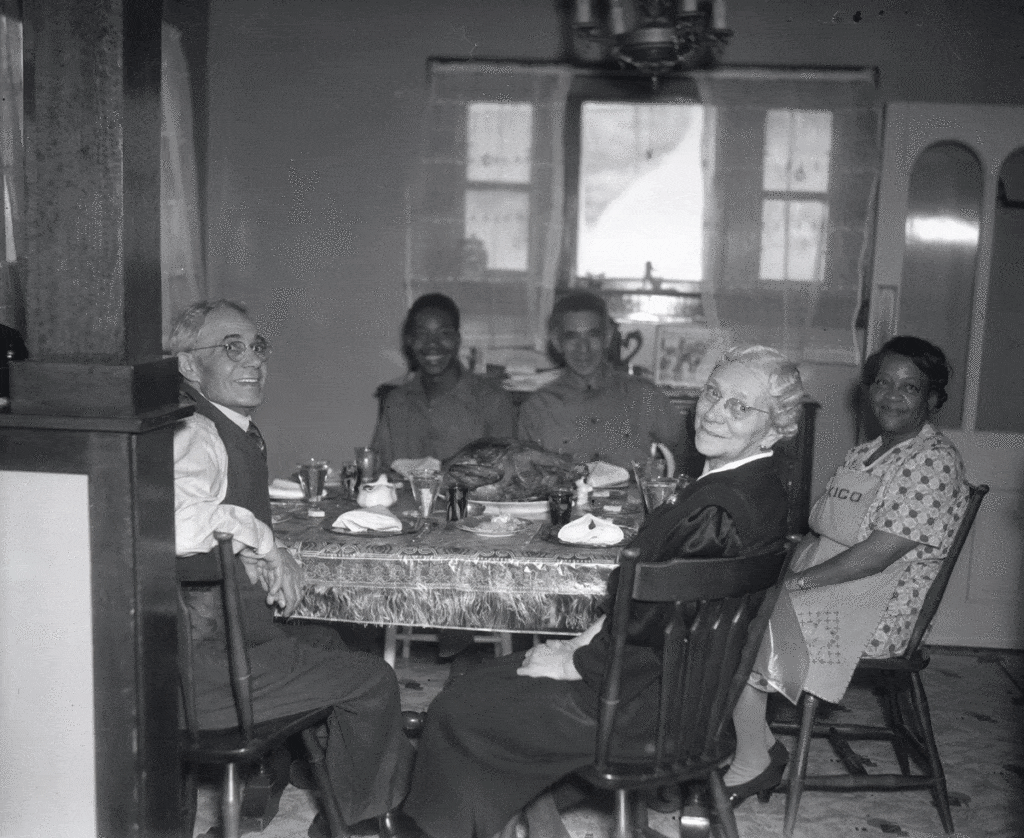Thanksgiving fell on November 28 in 1946. It was the first full year following the end of World War II and the United States perched on the precipice of a new looming threat: war with the Soviet Union. Americans likely were both cautiously optimistic and wary of what might lie ahead in the coming months and years. In his Thanksgiving Day proclamation, President Harry S. Truman called “upon the people of this Nation to observe that day by offering thanks to God for the bounties vouchsafed us, and by rededicating ourselves to the preservation of the ‘Blessings of Liberty’ envisaged by our forefathers in the preamble to the Constitution.”
At this time, mining prices had begun to decline; Park City must have been feeling the early effects of a faltering economy. Even so, the holidays were – and perhaps especially so in 1946 – a time for family celebrations and a bit of revelry. Despite a national meat shortage, farmers in Moroni, Utah and elsewhere were busy raising their second largest crop of turkeys on record – 41 million – just in time for the holidays; In Oregon, a bumper crop of cranberries was being harvested. Local merchants hawked additional provisions available to round out the traditional Thanksgiving meal.
The Park Record’s society pages brimmed with news of planned local gatherings and families traveling elsewhere for the holidays. The Thursday prior to the holiday, the paper helpfully featured an advice column titled “Household Memos” by Lynn Chambers in which she professed that “turkey and trimmings should be prepared, served simply” and that children could help out in the kitchen by removing pin feathers from the holiday bird. She followed up with a related column on Thanksgiving Day, which included recipes for “glamorizing” all those holiday leftovers.

Credit: Park City Historical Society & Museum, Kendall Webb Collection
Aside from the traditional Thanksgiving feast and family celebrations, Parkites could occupy their leisure time with various happenings around town. On the evening of Thanksgiving, the Egyptian Theatre proudly offered moviegoers a double feature: a rodeo western film titled “Throw a Saddle on a Star” followed by the latest installment of the “Blondie” films, based on the eponymous cartoon strip. The price of admission to the double feature ranged from 14 to 39 cents, tax included.
Nearby, the BPOE #734 was bustling with attendees to its holiday charity dance which was hailed as “the big event of the year” and “the best the season affords” for local Parkites. The Thanksgiving night dance marked the grand re-opening of the Elks Hall after renovations. It must have been a grand affair for partygoers, with decorations and a new dance floor, and music provided by the Star Dust Serenaders.
Although not specific to the Thanksgiving holiday, 1946 also marked the year of the opening of Snow Park, the area’s first ski area, and plans for the area’s first lift were underway about the time the holiday rolled around.
Despite factors near home and afar that would set in motion a period of decline in Park City that would last until the early 1960s, it seems Parkites enjoyed a respite from the worries of their world long enough to enjoy their Thanksgiving holidays in 1946.
Happy Thanksgiving from everyone at the Park City Museum!